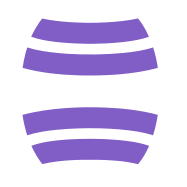Introduction:
The evolution of the internet has been nothing short of revolutionary. From the static web of the 1990s to the dynamic and interactive Web 2.0, the digital landscape has continually transformed. Now, a new paradigm is emerging – Web3. In this article, we delve into the intricacies of Web3, exploring its features, implications, and the potential it holds for reshaping the online experience.
Understanding Web3:
Web3 represents the next phase in the development of the internet. Unlike its predecessors, Web3 is characterized by decentralization, blockchain technology, and a shift towards user empowerment. At its core, Web3 aims to create a more transparent, secure, and equitable internet where users have greater control over their data and digital interactions.
Decentralization and Blockchain:
Central to the concept of Web3 is the idea of decentralization. Traditional internet models rely on centralized servers controlled by a single entity, exposing users to potential data breaches and manipulation. Web3 leverages blockchain technology, a decentralized and tamper-resistant ledger, to eliminate the need for intermediaries. This not only enhances security but also reduces the concentration of power in the hands of a few.
Smart Contracts and DApps:
Web3 introduces the concept of smart contracts – self-executing contracts with the terms of the agreement directly written into code. These contracts run on blockchain networks, ensuring transparency and immutability. Decentralized Applications (DApps) leverage smart contracts to offer various services, from finance to social networking, without the need for a centralized authority.
User Ownership of Data:
In the Web3 era, users regain control of their data. Blockchain technology allows individuals to own and manage their digital identities securely. This shift empowers users to decide who accesses their data and how it is used, challenging the prevailing model where tech giants often exploit user information for profit.
Challenges and Opportunities:
While the potential of Web3 is vast, challenges exist. Scalability, energy consumption concerns related to blockchain networks, and the need for widespread adoption are among the hurdles to overcome. However, the opportunities for innovation, financial inclusion, and democratizing access to information are driving the development of solutions to address these challenges.
The Token Economy:
Web3 introduces the concept of a token economy, where digital assets represent ownership or access rights within a decentralized ecosystem. Cryptocurrencies, Non-Fungible Tokens (NFTs), and other tokenized assets are becoming integral to Web3, fostering new economic models and avenues for value exchange.
Impact on Industries:
Web3 is poised to disrupt various industries, including finance, gaming, healthcare, and supply chain management. Decentralized finance (DeFi) platforms are redefining traditional banking, while NFTs are transforming the art and entertainment sectors. The ability of Web3 to provide secure and transparent solutions holds promise for optimizing processes in diverse fields.
Conclusion:
As we embrace the era of Web3, it’s clear that the internet is undergoing a profound transformation. The principles of decentralization, blockchain technology, and user empowerment are reshaping the digital landscape. While challenges persist, the potential benefits of increased security, transparency, and individual control over data make Web3 an exciting frontier for exploration and innovation. The journey into Web3 is not just a technological shift but a paradigmatic one, unlocking a future where the internet truly becomes a decentralized and democratized space for all.
